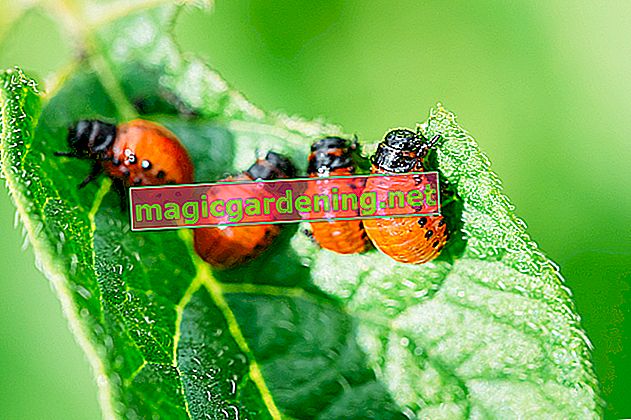
The native species of bindweed
The bindweed thrives mainly on dry, warm meadows and fallow land, while the bindweed prefers moist, nitrogen-rich field edges and woody hedges. Both species love full sun, but also thrive in partial shade. Growing very quickly, they wind their way up neighboring plants and can massively inhibit their development.
also read
- Six tips on how to successfully control weeds in the garden
- How can the bindweed be successfully combated?
- Fight couch grass successfully
The roots of the creepers can reach up to two meters into the ground, which makes control extremely difficult. They spread over rhizomes and shoot buds at the root tips, once they have settled. Moths are usually responsible for pollinating the pretty flowers. The seeds are then spread by the wind.
Remove the creepers successfully
Since the roots reach so far into the ground, weeding is not very promising. The fine shoots of the creepers tear off immediately under mechanical stress and it becomes extremely difficult to detach the plant parts from other plants. These survivors cannot do without patience and perseverance.
When fighting, do the following:
- Separate the shoots emerging from the ground throughout the gardening year.
- Use your hands to pull as much of the plants out of the ground as possible.
After about a year, the nutrients stored in the roots are used up to such an extent that the creepers wither.
Covering the winches with sturdy cardboard or weed fleece is also promising. (€ 28.90 at Amazon *) Cover these materials additionally with bark mulch so that the oxygen supply is largely cut off.
For ecological reasons, you should refrain from combating with chemical agents. This also applies to home remedies such as salt or vinegar, as these substances can cause significant damage to neighboring plants.
Tips
Field bindweed and fence winds definitely have their place in ecology. They are valued as a valuable source of food by butterflies, bees and beetles. Since they usually only thrive in a very limited area, it is therefore worth considering simply leaving the pretty flowering creepers standing and only clearing them once a year.








